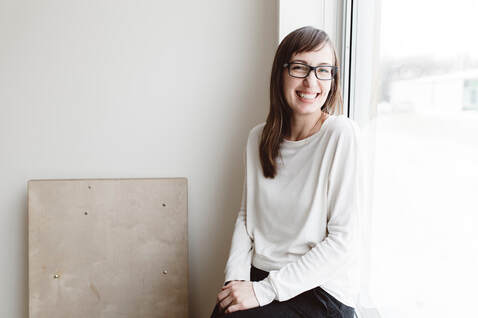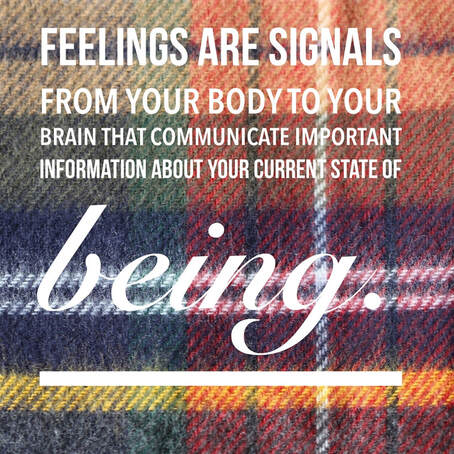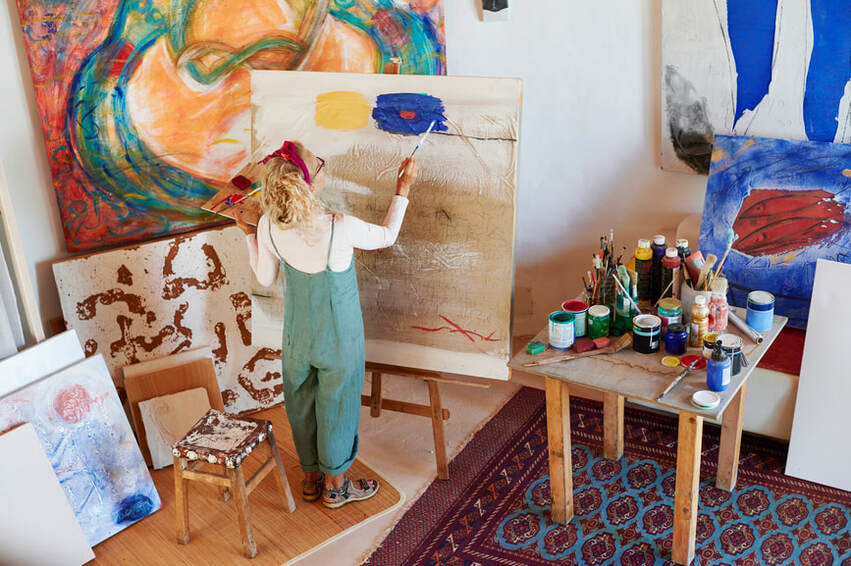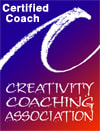Containment for Creative PeopleContainment is a skill often introduced early on in creativity counseling, as a way to manage feelings that arise during session. It is a way of modeling awareness of emotional experiences that can then be transferred to practice in our daily lives. The therapy for artists skill we will explore today is containment. With many practical uses and flavors of applications to try, we will focus on an introduction to and some basics of the skill. Containment is a Temporary SolutionThe goal of containment, unsurprisingly, is to contain, in this case, feelings. Containment as a skill refers to the process of containing, and this is something important to learn and practice. Once you have learned how to contain, your next task will be identifying when you need the skill and using it during those times. Collaboration with your creativity counselor is an important part to all of this, circularly, because containing feelings is a temporary solution. Ultimately we want to be able to experience and not resist our feelings, as in mindfulness practices, but there are experiences in our lives, past and present, that it is beneficial to temporarily contain. Containment is Useful for Creative PeopleWhat needs to be contained? In Creativity Counseling, we are probably talking about emotions, and strong ones. The function of an emotion is to communicate something to you through its expression, and to thwart that natural process by containing it means two things: 1) The emotional experience is likely too powerful to have all at once, and 2) you do not feel in control of the emotional experience. Creative people are passionate people, and whatever the source of your emotions, good or bad, you will feel them strongly. That makes containment an especially important skill to learn. The Containment Balloon for Therapy for ArtistsI will give you an example I often give to children I work with. Imagine a balloon representing you, and the air in the balloon representing emotions. The natural experience of this balloon is to be inflated and deflated, inflated and deflated. In this fashion, a normal flow of emotions comes and goes in our lives. If suddenly too much air inflates the balloon, then we have a deviation of the natural experience and now a larger volume of air to manage. If the larger volume of air is released all at once, the balloon flies all around without control. If the larger volume of air is not released at all, when more air inevitably inflates it, the balloon can burst. Containment represents a process in which we learn to let out some of the air, close off the balloon, let out more, close it again, etc. How to Practice ContainmentSo far so good. How is containment done? Like many things in Creativity Therapy- the answer is: it depends on what works for you. Your goal is to try to find a way to close yourself off from experiencing too many feelings at once and being debilitated by them. Remember- you don’t want to close yourself off forever, but you do need a system to do this periodically, allowing you to control how, when and how much you experience emotion. In creativity counseling, we will work together to devise a system to help you do this. Some people are successful with a physical ritual, like closing up their office at the end of a stressful day. Others do well with a meditation, visualizing locking up a box with the emotions inside. There are as infinite a number of ways to do this as your creativity will allow. When to Practice Containment as An ArtistOnce you have devised a system of containment, your second step will be identifying when you need it, and using it at that time. Sounds simple. It isn’t. But it is worth your troubles, because it is very effective. Containment is a process taught universally in mental health to help people cope with powerful experiences, and it can also work for you! Learning to identify when you have powerful feelings and to implement strategies like containment to help you manage them, is something that creativity counseling is designed to do! Learn Containment with Creativity Counseling for ArtistsLike any new skill, all therapy skills have a learning curve. This means it will require patience, perseverance and repetition to get good at it. Therapy skills are often less tangible than other things we may learn, and too often I will hear a client give up and say something doesn’t work, simply because they haven’t practiced long enough. It can be harder to stick to something you can’t physically see. Remember to do something new or different is to change and change is a process that takes time- so stick to it! Take one of these two steps and you can get started with Creativity Counseling and managing difficult feelings. Powerful emotions are part of normal experiences for Creative People, and you can manage them in a healthy way! 1) Take Courses in Creativity. Learning ways to manage big feelings is a first step you can take- and many more are available to you! Courses on reclaiming your strengths, living creatively, and learning and using therapy skills every day to live well are at your fingertips. 2) Book a Free Consultation. All new clients to Creatively, LLC are entitled to a 15 min, free consultation to sit with me and discuss your needs, services available, and we can problem solve and hand-pick best next steps to help you succeed. 3) Book a Coaching Package. Are you a working Creative in need of specific support? I offer a range of Coaching Packages- let's get started with one that is right for you. More Articles like, Containment in Therapy:Creative People, Creativity and Psychology, Crisis of Meaning, Coaching Creative People, Mental Health and Creativity, Creative People, Creative Personality and Anxiety, Make Time for Art, A Creative Personality Snapshot, Creativity for HSPs, Creativity and Dream Theory, Duality and Creativity, Creating Holistically
Comments are closed.
|
get more from The Creativity CoursesLiking educational topics and knowing what's hot in creativity? Creatively has online courses, with an interactive creative community, coaching sessions and more in the Creativity Courses. Want these blogposts in a newsletter? Subscribe here, and get a free gift. Cindy Cisnerosis a Creativity Coach, Creative Therapist and Professional Artist in Sykesville, Maryland. She is an expert straddling the realms of arts, creativity research, psychology, therapy, and coaching. She provides Online Creativity Counseling in Maryland and Virginia, and Online Creativity Coaching throughout the USA, Canada and the UK tailored for the discerning, imaginative, artistic, and neurodiverse. The information provided in this blog is from my own clinical experiences and training. It is intended to supplement your clinical care. Never make major life changes before consulting with your treatment team. If you are unsure of your safety or wellbeing, do not hesitate to get help immediately.
Archives
July 2024
|
|
Concierge Therapy for Creatives in Maryland
Creativity Coaching Worldwide including the USA, UK and Canada |
Telephone |
|




 RSS Feed
RSS Feed

